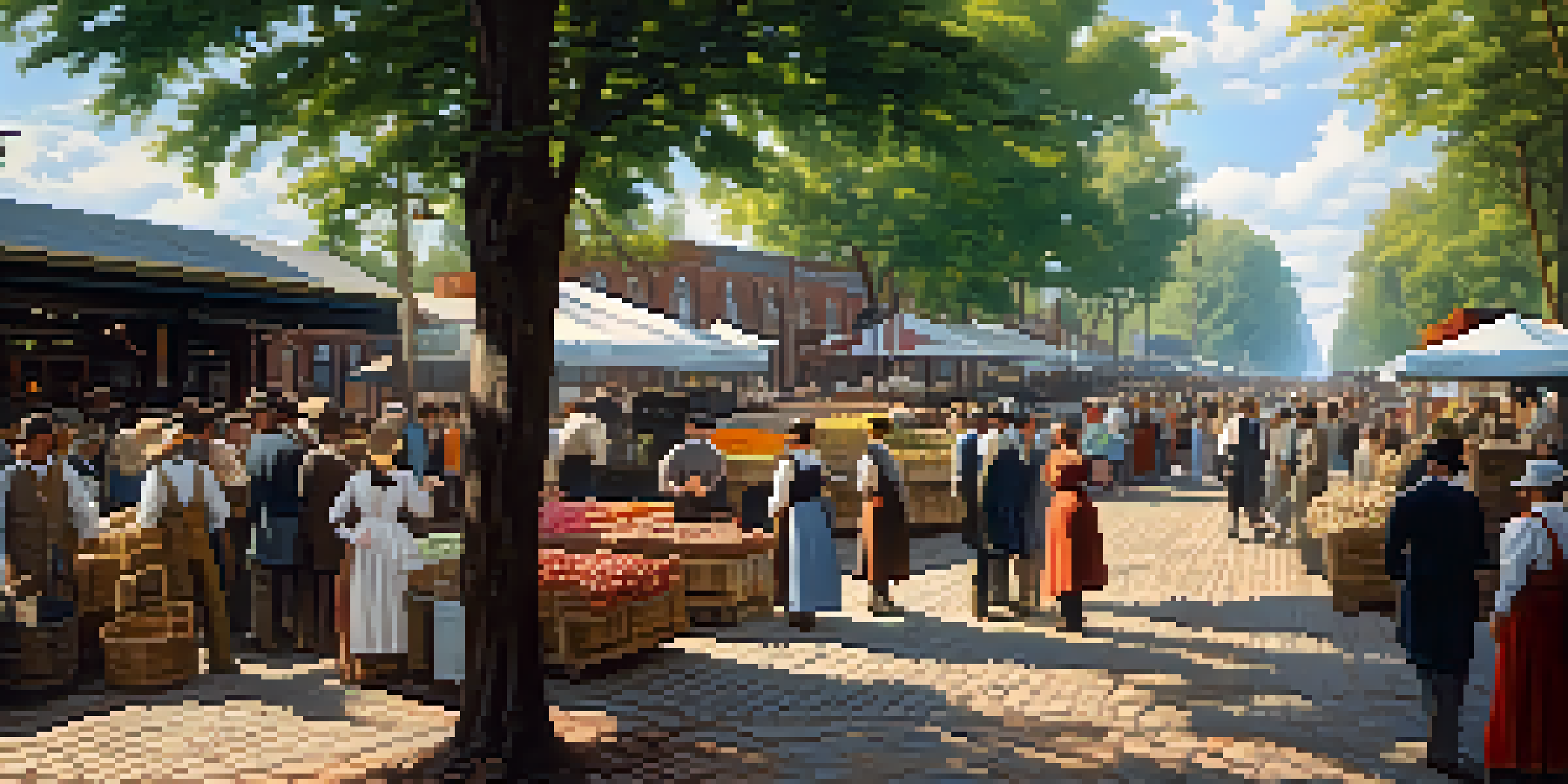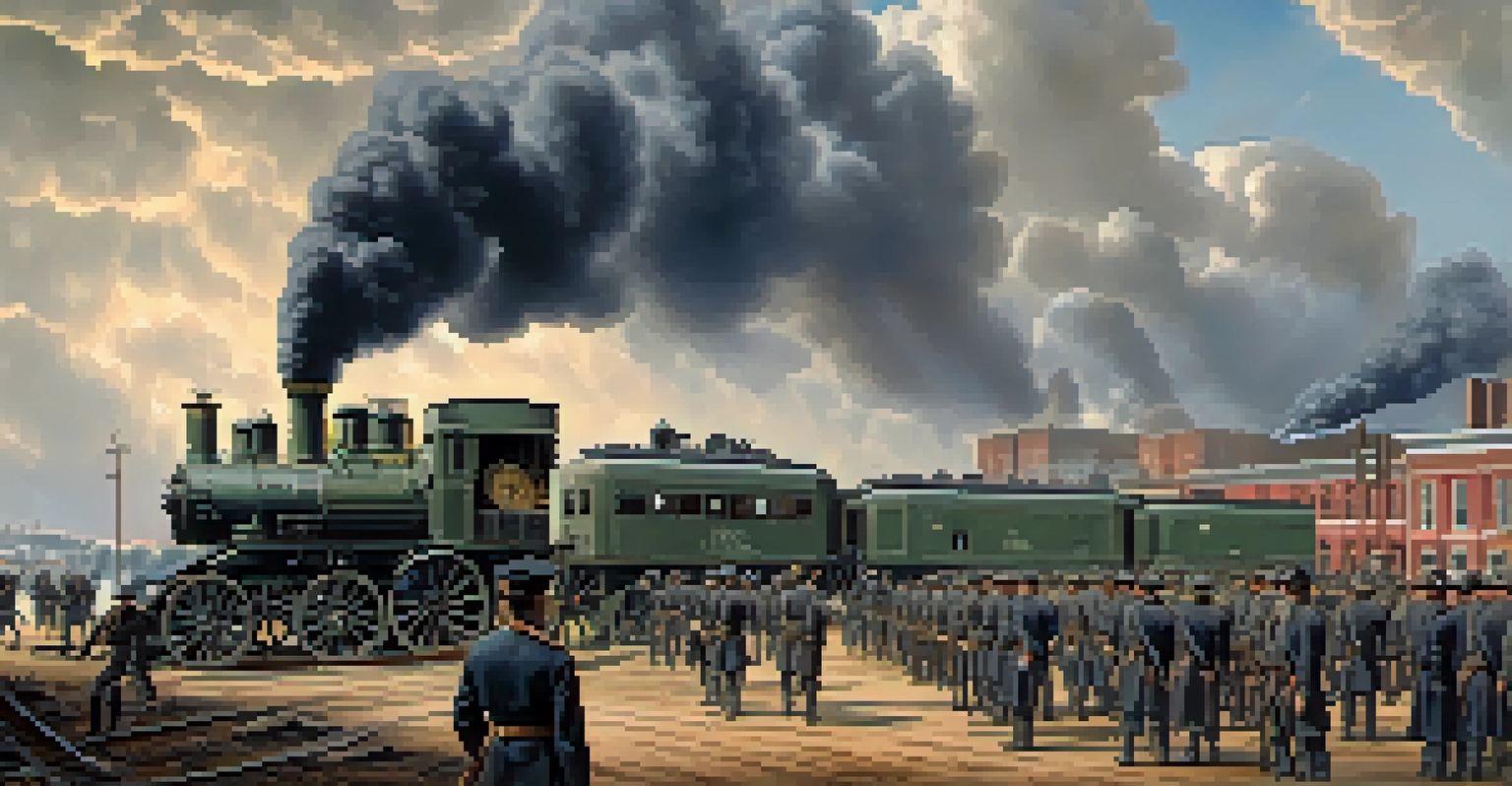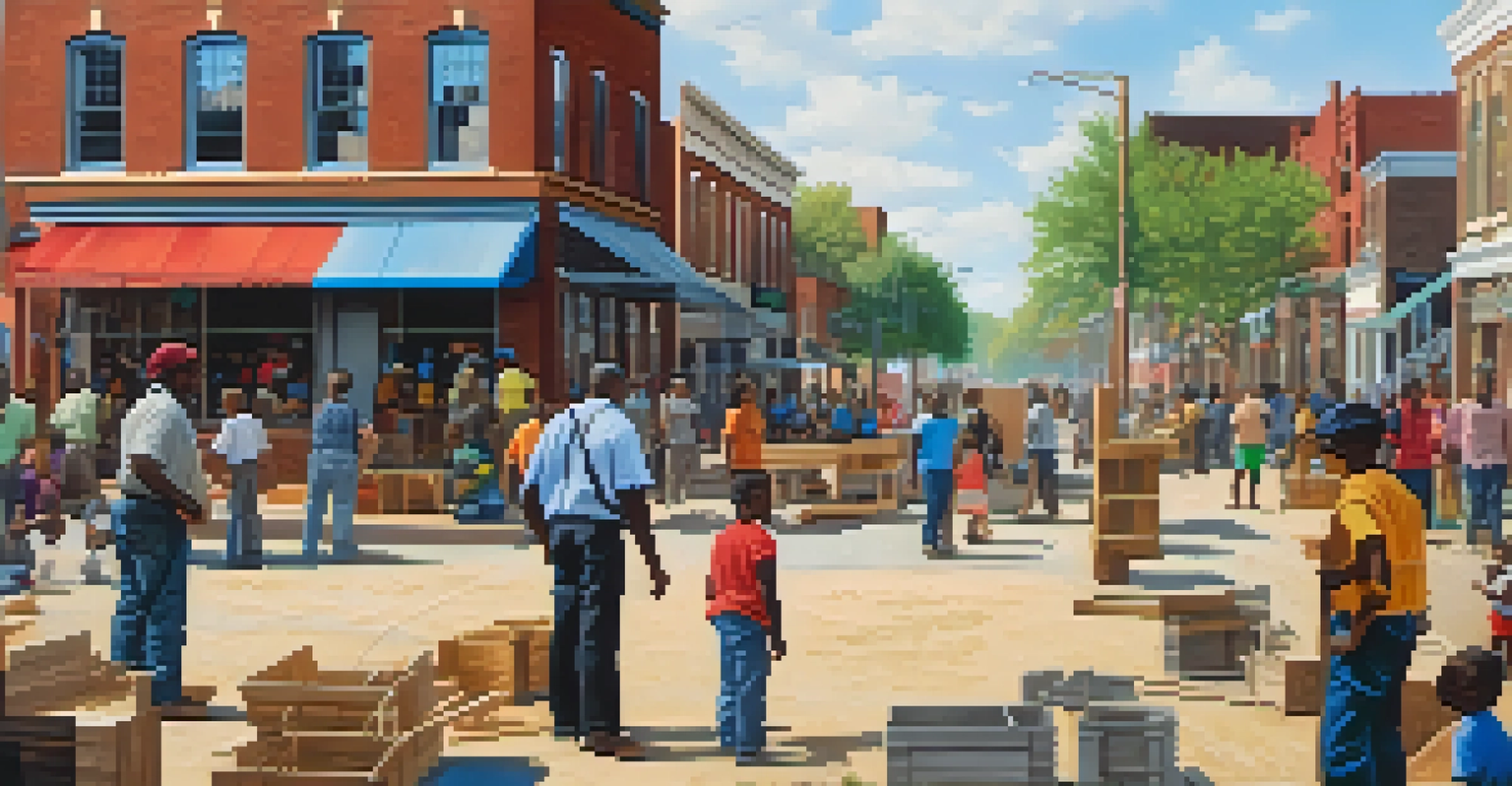Civil War Impact: Charlotte's Role and Reconstruction

Charlotte's Pre-Civil War Economic Landscape
Before the Civil War, Charlotte was a burgeoning economic hub, primarily due to its strategic location. The city's economy thrived on agriculture, textile manufacturing, and its essential role in the railroad network. This mix provided Charlotte with a unique position, fostering both wealth and a diverse workforce. As tensions rose between the North and South, Charlotte's prosperity was intricately linked to its Southern identity, which ultimately influenced its stance in the conflict.
The past is never dead. It's not even past.
The prosperity of the city attracted many residents, leading to a vibrant community that was deeply invested in the agricultural and industrial sectors. Cotton, in particular, became a significant crop, symbolizing the wealth and the contentious issues surrounding slavery. As the war approached, the city began to feel the weight of its economic ties to the South, creating a sense of urgency and deepening the divide with Northern states. The growing reliance on cotton and the textile industry made Charlotte a critical player in the Southern economy.
As the Civil War loomed, Charlotte's leaders had to navigate the challenges of maintaining economic stability while aligning with the Confederacy. This created a unique situation where local businesses were torn between loyalty to the South and the need for trade with the North. The city's economic interests would soon be tested as the realities of war began to unfold, setting the stage for Charlotte's role in the conflict.
Charlotte's Strategic Importance During the Civil War
As the Civil War erupted, Charlotte emerged as a strategic military center for the Confederacy. Its location made it ideal for troop movements and supply lines, allowing it to serve as a vital hub for Confederate logistics. This role not only heightened the city's military significance but also drew attention from both sides of the conflict. Charlotte's railroads became lifelines for the South, transporting soldiers and supplies to the front lines.

The city's infrastructure played a pivotal role in sustaining the Southern war effort. Factories in Charlotte produced essential goods, including uniforms and ammunition, which were critical for Confederate soldiers. This industrial output not only supported the war but also solidified Charlotte's reputation as an indispensable asset to the Confederate cause. The bustling activity in the city showcased its resilience even in the face of impending conflict.
Charlotte's Economic Transformation
Before and during the Civil War, Charlotte evolved into a crucial economic hub, heavily reliant on agriculture and textiles, particularly cotton.
As the war progressed, the city became a target for Union forces eager to disrupt Confederate supply chains. This led to increased military activity in the area, with skirmishes and the threat of invasion looming over Charlotte. The tension created a sense of urgency among residents, who were determined to support the war effort while grappling with the realities of conflict encroaching on their daily lives.
The Effects of the Civil War on Charlotte's Population
The Civil War significantly impacted Charlotte's population, leading to demographic shifts and social upheaval. Many men from the area enlisted in the Confederate army, leaving behind families and altering the community's dynamics. This absence was felt deeply as women took on new roles, managing businesses and farms, which began to challenge traditional gender norms. The war transformed not only the landscape but also the identities of those who remained.
History is not a burden on the memory but an illumination of the soul.
As the conflict raged on, the city experienced an influx of refugees, both from nearby rural areas and other parts of the South. These new residents brought their own stories of hardship and resilience, further complicating the social fabric of Charlotte. The population growth also strained resources and services, as the city struggled to accommodate the needs of both locals and newcomers. The impact of war was palpable in the everyday lives of Charlotte's citizens.
With the end of the war, the return of soldiers added another layer of complexity to Charlotte's demographic landscape. Many veterans faced challenges reintegrating into a community that had changed significantly during their absence. The scars of war, both visible and invisible, left lasting impressions on the population, shaping the cultural and social dynamics of the city for years to come.
Charlotte's Role in the Reconstruction Era
After the Civil War, Charlotte found itself at the forefront of the Reconstruction era, tasked with rebuilding and redefining its social and economic structures. The city served as a site for political experimentation, with newly freed African Americans seeking to assert their rights and engage in the democratic process. This period was marked by both hope and resistance, as communities navigated the challenges of integrating formerly enslaved individuals into society.
The Reconstruction era also sparked debates over land and labor, as many former plantation owners struggled to adapt to a changing economy. In Charlotte, this led to the emergence of new labor systems, including sharecropping, which affected both Black and white populations. The economic landscape was shifting, and Charlotte was at the crossroads of these transformations. The city became a microcosm of the broader struggles faced across the South during this tumultuous period.
Impact of War on Community Dynamics
The Civil War led to significant demographic shifts in Charlotte, with many men enlisting and women stepping into new roles, reshaping social norms.
Despite the challenges, Charlotte began to lay the groundwork for future growth and development. The establishment of schools and institutions aimed at educating African Americans marked a critical turning point in the city's history. This commitment to education and progress would eventually pave the way for Charlotte's transformation into a modern urban center, showcasing the resilience and determination of its inhabitants during Reconstruction.
The Social Changes in Charlotte Post-Civil War
The aftermath of the Civil War brought significant social changes to Charlotte, affecting interactions among its diverse population. The city began to grapple with issues of race, equality, and civil rights as newly freed individuals sought to carve out their place in society. This period saw the emergence of grassroots movements advocating for African American rights, which laid the foundation for future civil rights efforts. The struggle for equality became a defining characteristic of Charlotte's post-war identity.
Charlotte's social landscape was further complicated by the rise of segregationist policies and Jim Crow laws, which sought to institutionalize racial discrimination. These laws created divisions within the community and forced African Americans into marginalized roles. The fight against these oppressive systems fostered resilience among the Black population, who organized and mobilized for change. The tension between progress and regression reflected the broader societal struggles of the time.
As the city navigated these complexities, Charlotte became a site of cultural exchange and innovation. The blending of traditions and ideas fostered a rich cultural landscape, with new music, art, and literature emerging from the community. This cultural renaissance not only provided a sense of identity but also strengthened the bonds among residents. The social changes of this era would ultimately shape Charlotte's character and influence its trajectory for generations.
Economic Recovery and Growth in Post-War Charlotte
In the wake of the Civil War, Charlotte faced the daunting task of economic recovery and growth. The war had disrupted key industries, but the city's residents were determined to rebuild. Entrepreneurs and community leaders began to innovate, focusing on diversifying the economy beyond agriculture. This shift laid the groundwork for new industries, including textiles and manufacturing, which would become cornerstones of Charlotte's future prosperity.
The establishment of new businesses and a focus on infrastructure development played a crucial role in revitalizing the local economy. Railroads continued to be a vital asset, facilitating trade and attracting investment. As the economy began to stabilize, Charlotte saw an influx of new residents seeking opportunities, further fueling the growth of the city. This post-war boom transformed Charlotte into a regional center for commerce and industry.
Legacy of Civil Rights Struggles
The post-war era in Charlotte was marked by the fight for racial equality, setting the stage for future civil rights movements and community resilience.
The resilience of Charlotte's community was evident as they navigated the challenges of rebuilding. Local leaders advocated for education and workforce development, recognizing that a skilled labor force was essential for sustainable growth. This commitment to progress and collaboration among residents set the stage for Charlotte's transformation into a thriving urban center in the decades to come.
Legacy of the Civil War and Reconstruction in Charlotte
The legacy of the Civil War and Reconstruction Era continues to shape Charlotte's identity today. The struggles faced during this time laid the groundwork for ongoing discussions about race, equality, and community. As the city reflects on its history, there is a collective effort to acknowledge the past and learn from it, fostering dialogue about social justice and inclusion. This ongoing journey underscores the resilience of Charlotte's residents and their commitment to progress.
Memorials and historical sites throughout Charlotte serve as reminders of the city's complex past. These sites not only honor those who fought and struggled during the Civil War but also educate future generations about the importance of understanding history. Walking through these spaces, one can sense the echoes of the past, providing valuable lessons for how communities can come together to overcome adversity and build a brighter future.

As Charlotte continues to grow and evolve, the lessons from the Civil War and Reconstruction remain relevant. The city is embracing its diverse heritage and working towards a more inclusive future. This journey reflects the spirit of Charlotte—a place where history is acknowledged, diverse voices are celebrated, and the pursuit of equality continues to inspire the community.